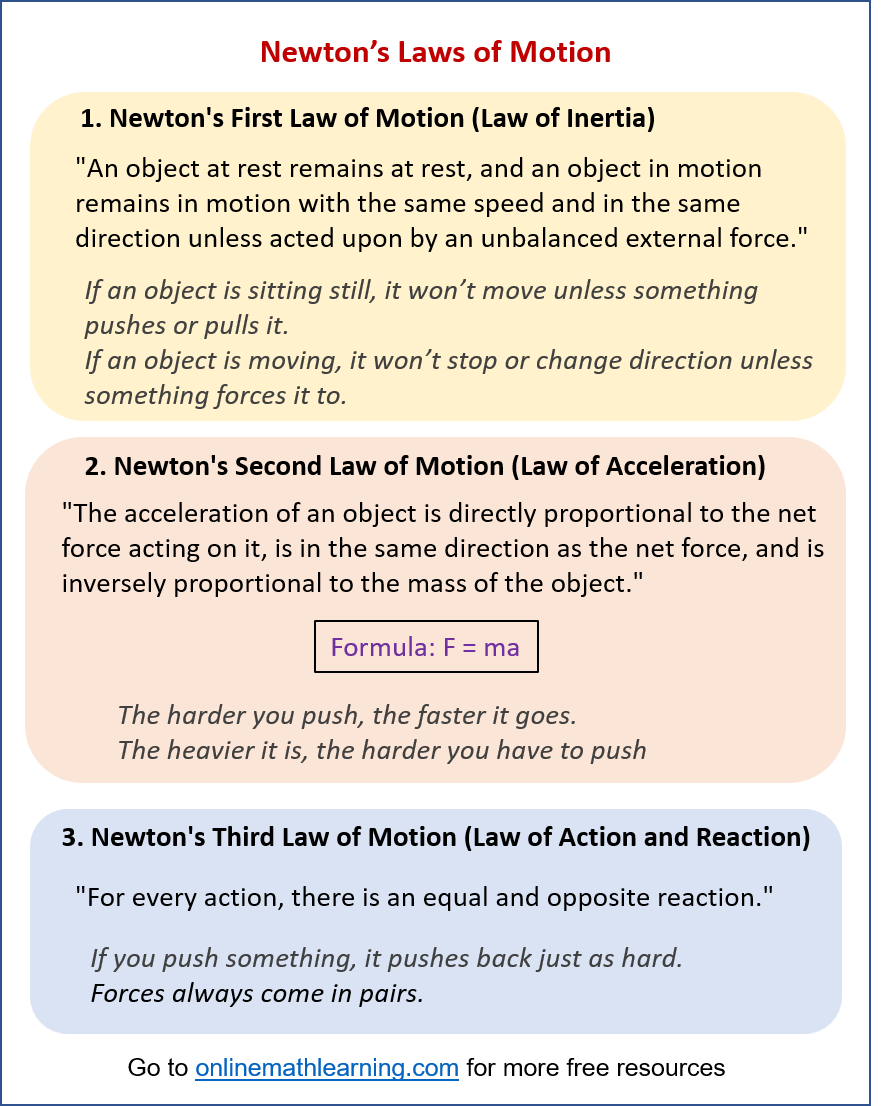Newton's Law of Motion
Related Topics:
IGCSE Physics Lessons
Math Worksheets
A series of free GCSE/IGCSE Physics Notes and Lessons.
Sir Isaac Newton’s three laws of motion are fundamental principles of classical physics that describe the relationship between a body and the forces acting upon it, and its motion in response to those forces. They form the basis of classical mechanics and explain much of the motion we observe in the everyday world.
The following diagram gives the Newton’s Laws of Motion. Scroll down the page for more examples.

Newton’s First Law of Motion
If the resultant force acting on a stationary object is zero, then the object will remain stationary.
If the resultant force acting on a moving object on a moving object is zero, then the object will continue moving with the same velocity.
Describe Newton’s first law of motion.
Apply Newton’s first law to moving and stationary objects.
Newton’s Second Law of Motion
Describe Newton’s second law of motion and calculate the force requires to accelerate an object.
Estimate speed, acceleration and forces for everyday road transport.
Describe what is meant by inertia and inertial mass.
The equation for the Second Law of motion is:
F = ma
The acceleration of an object is proportional to the resultant force acting on the object and inversely proportional to the mass of the object.
Newton’s Third Law of Motion
Describe and apply Newton’s third law of motion.
Every action has an equal and opposite reaction.
Whenever two objects interact, the forces they exert on each other are equal and opposite.
Try out our new and fun Fraction Concoction Game.
Add and subtract fractions to make exciting fraction concoctions following a recipe. There are four levels of difficulty: Easy, medium, hard and insane. Practice the basics of fraction addition and subtraction or challenge yourself with the insane level.

We welcome your feedback, comments and questions about this site or page. Please submit your feedback or enquiries via our Feedback page.